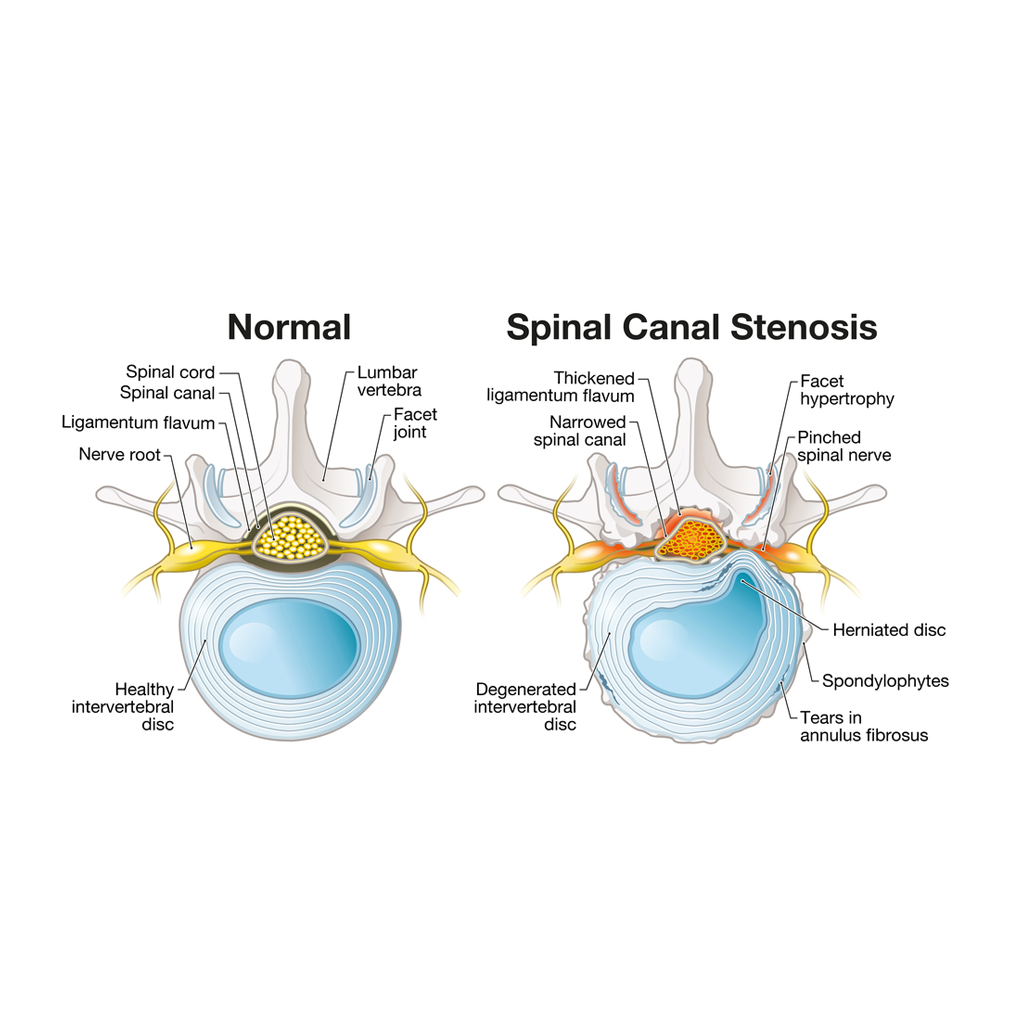Spinal stenosis is a condition in which the spinal canal narrows, compressing the spinal cord and nerve roots. This can cause a range of symptoms, including pain, numbness, and weakness in the back, legs, and arms. Many people who are diagnosed with spinal stenosis wonder if the condition can be cured.

What does spinal stenosis look like?
First, it’s important to note that spinal stenosis is a chronic condition, meaning it is ongoing and typically worsens over time. While it may not be possible to completely cure spinal stenosis, there are a number of treatment options available that can help manage symptoms and slow the progression of the condition.
One of the most common treatments for spinal stenosis is physical therapy. Physical therapy can help strengthen the muscles around the spine, improve flexibility, and reduce pain. In addition, physical therapy can help improve posture and body mechanics, which can help reduce pressure on the spine and alleviate symptoms.
Another common treatment for spinal stenosis is medication. This can include over-the-counter pain relievers like ibuprofen or acetaminophen, as well as prescription medications like muscle relaxants or opioids. In some cases, epidural steroid injections may be recommended to help reduce inflammation and pain.
Surgery may also be an option for some people with spinal stenosis. The goal of surgery is typically to decompress the spinal cord and nerve roots, allowing them to function more normally. There are a number of surgical procedures that may be used to treat spinal stenosis, including laminectomy, foraminotomy, and spinal fusion.
At the Spine and Performance Institute Dr. Sharan performs surgery for spinal stenosis using the latest techniques. He has pioneered a procedure called Awake Spine Surgery. To perform this surgery he uses a small incision with a combination of local and regional anesthesia. By avoiding general anesthesia patients are able to mobilize quicker, which leads to a faster recovery. In addition Awake Spine Surgery leads to less pain after surgery, requiring less opioids as well. Patients come from all over the United States to Dr. Sharan for this specific non-invasive spine surgery.
It’s worth noting that the success of any treatment for spinal stenosis will depend on a number of factors, including the severity of the condition, the age and overall health of the patient, and the specific treatment being used. While some people may experience significant improvement in their symptoms with treatment, others may continue to experience ongoing symptoms despite treatment.
In conclusion, while spinal stenosis may not be able to be completely cured, there are a number of treatment options available that can help manage symptoms and slow the progression of the condition. If you are experiencing symptoms of spinal stenosis, call the Spine and Performance Institute at 732-898-3950 to see if you are a candidate for this less invasive treatment for spinal stenosis.

